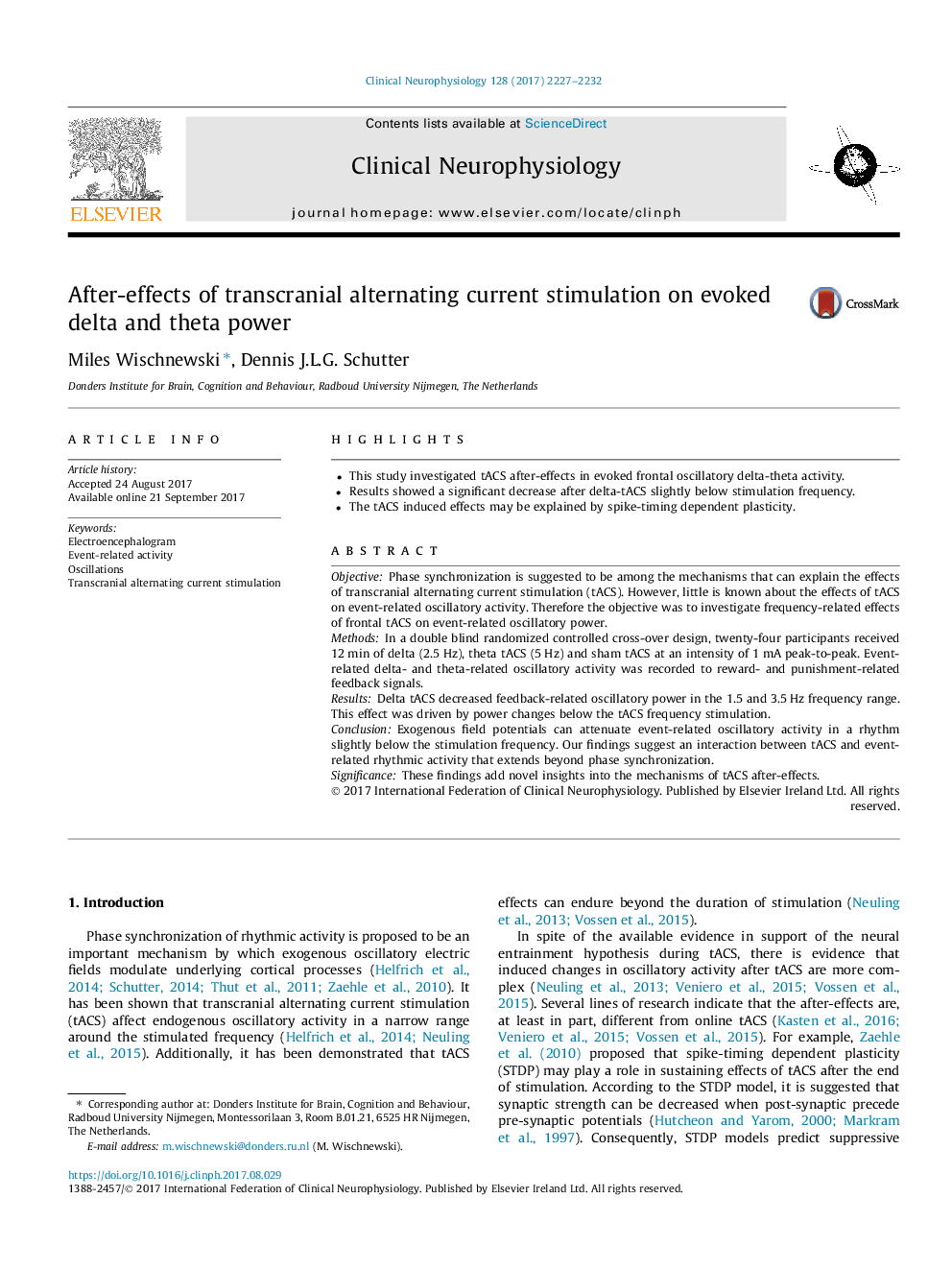| Article ID | Journal | Published Year | Pages | File Type |
|---|---|---|---|---|
| 5627597 | Clinical Neurophysiology | 2017 | 6 Pages |
â¢This study investigated tACS after-effects in evoked frontal oscillatory delta-theta activity.â¢Results showed a significant decrease after delta-tACS slightly below stimulation frequency.â¢The tACS induced effects may be explained by spike-timing dependent plasticity.
ObjectivePhase synchronization is suggested to be among the mechanisms that can explain the effects of transcranial alternating current stimulation (tACS). However, little is known about the effects of tACS on event-related oscillatory activity. Therefore the objective was to investigate frequency-related effects of frontal tACS on event-related oscillatory power.MethodsIn a double blind randomized controlled cross-over design, twenty-four participants received 12Â min of delta (2.5Â Hz), theta tACS (5Â Hz) and sham tACS at an intensity of 1Â mA peak-to-peak. Event-related delta- and theta-related oscillatory activity was recorded to reward- and punishment-related feedback signals.ResultsDelta tACS decreased feedback-related oscillatory power in the 1.5 and 3.5Â Hz frequency range. This effect was driven by power changes below the tACS frequency stimulation.ConclusionExogenous field potentials can attenuate event-related oscillatory activity in a rhythm slightly below the stimulation frequency. Our findings suggest an interaction between tACS and event-related rhythmic activity that extends beyond phase synchronization.SignificanceThese findings add novel insights into the mechanisms of tACS after-effects.
